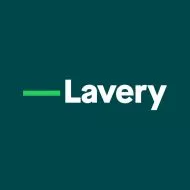Most accountants and lawyers are aware of the fact that a private corporation can pay dividends to its shareholders with no tax impact on them if the dividends are paid out of the capital dividend account ("CDA"). This tax account may consist, among other things, of the nontaxable portion of capital gains realized by a private corporation, life insurance proceeds received by this type of corporation, or capital dividends received from another private corporation. The purpose of the CDA is essentially to ensure that these amounts, which would not be taxable if they were received by the shareholder directly, are treated in the same manner when they are realized through a private corporation. The CDA is therefore a very valuable mechanism because of the favourable tax treatment attached to it.
Subsection 83(2.1) of the Income Tax Act (Canada) ("ITA") provides for an anti-avoidance rule whose purpose is to prevent the shares of a private corporation from being purchased in order to benefit from the available CDA. It reads as follows:
(2.1) Notwithstanding subsection 83(2), where a dividend that, but for this subsection, would be a capital dividend is paid on a share of the capital stock of a corporation and the share (or another share for which the share was substituted) was acquired by its holder in a transaction or as part of a series of transactions one of the main purposes of which was to receive the dividend,
- the dividend shall, for the purposes of this Act (other than for the purposes of Part III and computing the capital dividend account of the corporation), be deemed to be received by the shareholder and paid by the corporation as a taxable dividend and not as a capital dividend; and
- paragraph 83(2)(b) does not apply in respect of the dividend.
In a recent decision in the matter of Groupe Honco Inc. et al. v. The Queen (file no. 2009- 2134 (IT)G), rendered on September 4, 2012, the Tax Court of Canada specifically considered subsection 83(2.1) ITA. The Court held that subsection 83(2.1) ITA applies in a situation in which the shares of a corporation (the "Target") were acquired where the Target was the beneficiary of an insurance policy in the amount of $750,000 on the life of the seller, who was very sick at the time of sale of the shares. Since the seller died shortly after the transaction, the insurance proceeds were received by the Target after the acquisition, thereby creating a significant CDA for the Target. Dividends from the CDA, thus created, were subsequently paid by the Target (since merged) to its shareholders. These dividends were redefined as taxable dividends by the Canada Revenue Agency on the basis of subsection 83(2.1) ITA.
The taxpayers unsuccessfully attempted to argue that the main purpose for the acquisition of the Target's shares was not to receive the capital dividends, but rather that it was done for other business and tax reasons (e.g. to benefit from the Target's accumulated losses).
However, the Court concluded that subsection 83(2.1) ITA applied and, accordingly, that the dividends paid were in fact taxable dividends.
This decision underscores the importance of considering the potential application of subsection 83(2.1) ITA in any situation involving the acquisition of a private corporation in which a CDA remains unused or may be created subsequent to the acquisition.
The content of this article is intended to provide a general guide to the subject matter. Specialist advice should be sought about your specific circumstances.

